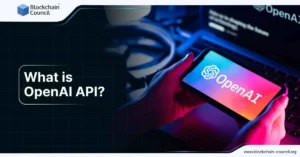Allow OpenAI to Embrace the Challenges

Microsoft AI’s Unique Strategy in the Generative AI Arena
The Philosophy of Being Second
Mustafa Suleyman, the CEO of Microsoft AI, recently shared insights about the company’s stance in the competitive field of generative AI. During a television interview, he outlined a strategy that involves deliberately lagging behind leading AI developers like OpenAI. Instead of attempting to be the first to market with a cutting-edge model, Microsoft prefers to take an approach where it can learn from the advancements made by others, adopting their innovations after a few months. Suleyman emphasized the benefits, stating that this approach is not only more economical but also allows them to tailor AI solutions better for specific customer needs.
"Our strategy is to play a very tight second, given the capital intensiveness of these models," Suleyman remarked.
This unusual position may seem counter intuitive for a major player in the tech sector, but it demonstrates the reality Microsoft faces. As a significant partner of OpenAI, Microsoft leverages the resources from its collaboration while avoiding the financial burden associated with creating a leading-edge AI model from scratch.
OpenAI Collaboration and Strategy
Microsoft’s deep ties with OpenAI illustrate its strategic choice. The company provides extensive resources, like Azure cloud computation, in return for the rights to use OpenAI’s generative models, including their popular GPT series. This partnership minimizes Microsoft’s risk and allows it to focus on its innovative applications, such as the Copilot AI services that integrate these models.
However, this does not mean that Microsoft is entirely reliant on OpenAI’s innovations. The company is also developing its own lineage of smaller, permissively licensed models known as the Phi family. These models are designed to be lightweight, making them suitable for lower-end devices like laptops, which is crucial for broad accessibility and utility.
Building Capability with Smaller Models
The Phi models, like Phi-4, with parameters numbering in the double-digit billions, represent a more efficient path for Microsoft. Unlike larger models that require significant infrastructure costs, these smaller models can be deployed on a solitary high-end GPU, decreasing operational expenses. This balance between effectiveness and efficiency is essential as organizations increasingly seek user-friendly AI solutions without exorbitant costs.
Even though these models may not boast the extensive capabilities of larger architectures like GPT-4.5, they hold their own in generating satisfactory results for various applications.
Future Aspirations for Independence
While the ongoing partnership with OpenAI is lucrative, Suleyman indicated that building self-sufficiency in AI is crucial for Microsoft’s long-term vision. He emphasized the importance of not solely relying on external partners and highlighted the goal of developing Microsoft’s ability to independently create advanced AI systems. This suggests that the company is laying the groundwork with the Phi models, but it is clear that the collaboration with OpenAI will remain strong for the foreseeable future, at least until 2030.
A Broad Approach to Development
Suleyman’s strategy extends beyond merely developing models; it encompasses a broader systems approach. Microsoft is concentrating on making AI integrations into existing frameworks seamless and valuable. The successful incorporation of AI into enterprise systems is often complex, and Microsoft is actively pushing research and frameworks to assist in this integration.
For example, they have initiated projects such as Autogen, facilitating the orchestration of multiple AI agents, and KBLaM, which works on simplifying the enhancement of language models with structured data. Additionally, they recently introduced VidTok, an innovative video tokenizer designed to help AI understand video content.
Competing in a Shifting Landscape
As the AI landscape evolves, Microsoft’s strategy of following the leader while focusing on application integration sets it apart in a field crowded with direct competitors. Other tech giants, such as Amazon Web Services, are also adopting similar strategies, showing that a variety of methods can lead to success in the fast-paced world of technology. While Microsoft continues refining its approach, it is evident that the company is gearing up to carve its niche within the competitive generative AI space.





